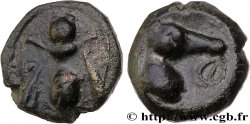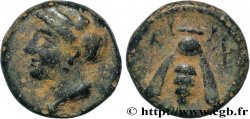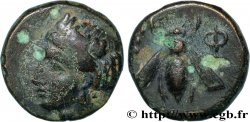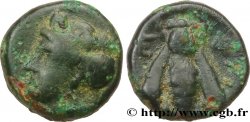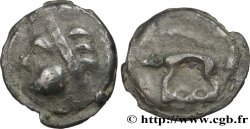v49_0235 - IONIA - EPHESUS Unité, (PB, Æ 18)
MONNAIES 49 (2011)
Starting price : 125.00 €
Estimate : 200.00 €
Realised price : 246.00 €
Number of bids : 6
Maximum bid : 456.00 €
Starting price : 125.00 €
Estimate : 200.00 €
Realised price : 246.00 €
Number of bids : 6
Maximum bid : 456.00 €
Type : Unité, (PB, Æ 18)
Date: c. 350-295 AC.
Mint name / Town : Ionie, Éphèse
Metal : copper
Diameter : 18 mm
Orientation dies : 12 h.
Weight : 7,17 g.
Rarity : R1
Coments on the condition:
Exemplaire sur un petit flan très épais, bien centré des deux côtés à l’usure importante, mais parfaitement lisible et identifiable. Belle abeille. Revers de style fin. Épaisse patine vert olive foncé, légèrement granuleuse
Catalogue references :
Predigree :
Cet exemplaire provient du stock CGB (1991)
Obverse
Obverse description : Abeille vue de dessus.
Obverse legend : E-F
Obverse translation : (Éphèse).
Reverse
Reverse description : Cerf agenouillé à gauche, tournant la tête à gauche.
Reverse legend : MORIMOS
Reverse translation : (Morimos).
Commentary
Nous avons ici un exemplaire avec le cerf tourné à gauche.
Here we have a example with the deer facing left
Here we have a example with the deer facing left







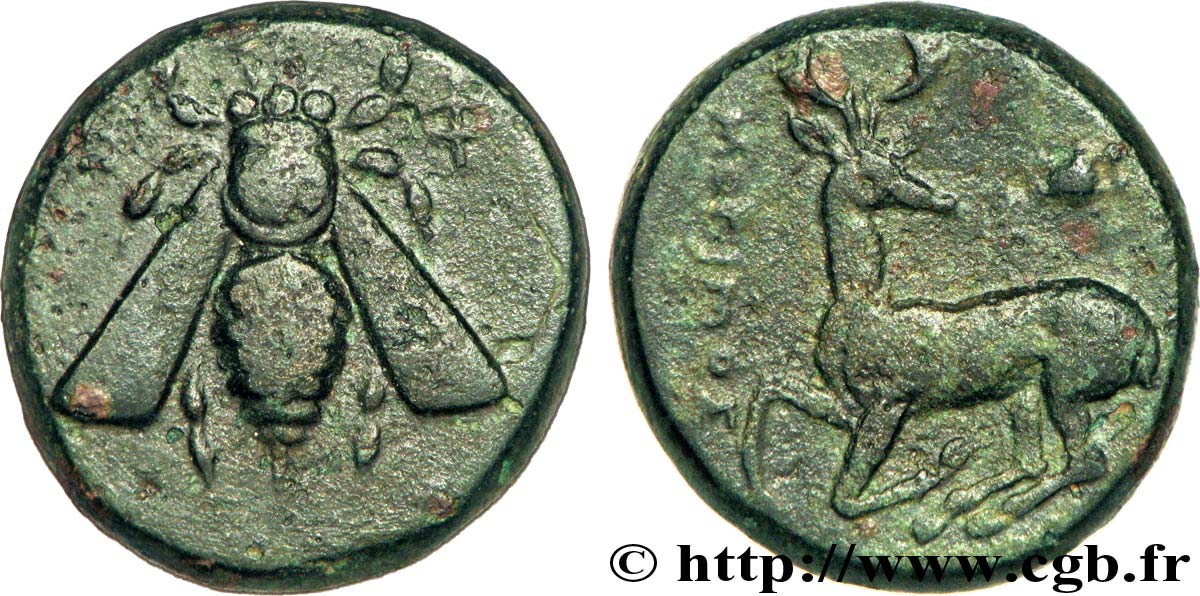
 Report a mistake
Report a mistake Print the page
Print the page Share my selection
Share my selection Ask a question
Ask a question Consign / sell
Consign / sell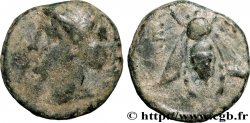
 Full data
Full data